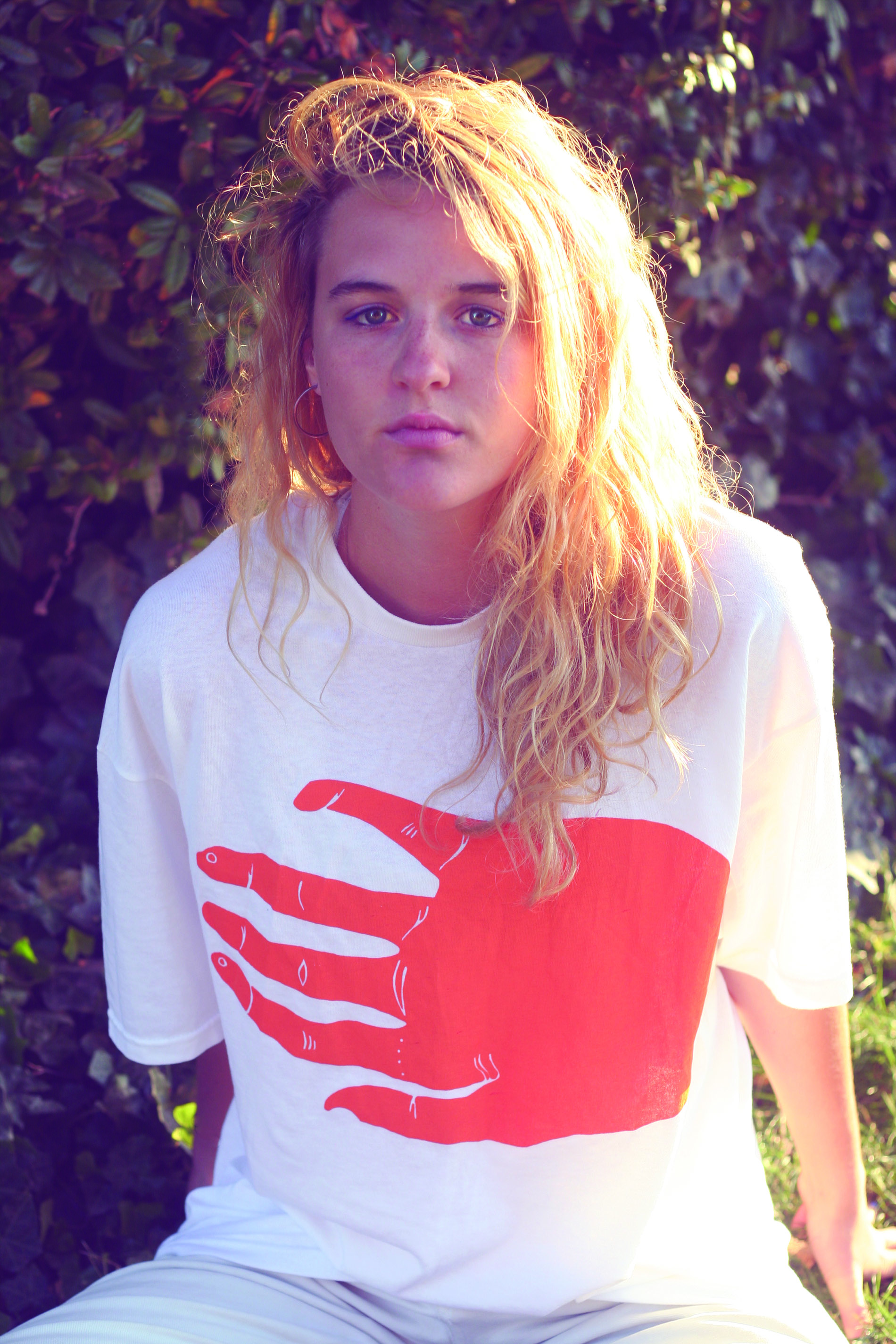When listening to the soothing synth sounds of Francesca Belcourt’s new album Zongs, I couldn’t help but wonder, “what the hell is a zong?” I had sudden flashbacks to high school house parties, where small crowds of fearless teenagers would line up to hit “the zong” — a gargantuan, voluminous bong that was designed to put you on your ass. Surely Belcourt couldn’t be referencing the zong, could she? As it turns out, the title of Belcourt’s sophomore solo album has nothing to do with getting blitzed, but it will definitely take listeners on a trip.
I managed to catch up with Belcourt right after her trip to Shambhala. Looking for a day’s rest before she made another long journey to the Discovery Islands, I’m sure the last thing she needed was a reporter in her living room sticking an iPhone in her face; but she toughed it out, and made me feel right at home.
Belcourt forms one-half of the experimental synth-pop duo Mu (alongside bandmate Brittney Rand), but this time around she’s flying solo. Zongs is the second addition to Belcourt’s solo project, after Hush Hush, which was released in 2013. As Belcourt will admit, her new album is a bit of a passion product — the result of some orphaned tracks that she had written but still hadn’t found a home for.
“A lot of these songs were things I didn’t think fit for the Mu project. Each time I tossed one aside, the pile got bigger,” Belcourt tells me. “I was gonna go off-hand, maybe release a few on my own, but as the pile got bigger, I thought ‘I wanna make something of this.’” Later adding, “It’s not fair to myself as someone who is making all this music to not show it and give [the songs] the credit that [they] deserve.”

“A lot of it is much more stream-of-consciousness,” Belcourt says, comparing Zongs to her work with Mu. “I thought less about the structure. I wanted to be more loose with some of [the songs]. You’ll notice that, for instance, the opening song doesn’t really have a chorus. That’s why I didn’t want to use it with Mu, cause it doesn’t have a pop structure that we always strive for. A lot of the songs are kind of thin. The song ‘Bloody’ just has maybe four tracks of synth, and my vocals over top; they’re just loose. It’s more of a sonic poem.”
Belcourt’s abandonment of traditional song structure provoked her to look at this collection of music in a different light. “That’s why I called it Zongs,” she says, “because I don’t really think about them as songs. They’re just something weirder than that to me.”
Whether the album is made up of zongs or songs, it’s undeniably fantastic. After hearing the opening track, “Sketchy Cuddle,” it’s pretty easy to recognize that Belcourt is immensely talented. The slow and melodious track, elevated by its psychedelic tone and Belcourt’s soft vocals, is completely mesmerizing, and keeps you wondering where the album will go to next.
Zongs quickens its pace with “In Between” and “Kinda Bad,” but not until you realize that Belcourt draws from a wide array of sounds and styles to create her own exceptional groove. The highlight of the album hits around the halfway mark with a song titled “Meaning,” when Belcourt drops a beat with fellow Vancouver musician Oshea. Belcourt’s lyricism rises to the top of this song, highlighted by her repetition of the phrase “there is no meaning;” a self-reflexive jab at the very concept of making music.
Zongs proves Belcourt to be a unique local talent, although she isn’t always sure how her songs are going to turn out when she enters the studio. In terms of creative control, Belcourt comments on how the handful of collaborations throughout her album do not undermine her authorship.
“It’s nice to be in charge fully. It’s empowering to be a woman, and be a producer, and have people listen to you for once,” Belcourt tells me. “It doesn’t happen as often. A lot of women will contribute to people’s music, but it’s not really collaboration if you’re just singing over someone else’s [track].”
Producing electronic music by female artists is part of the mission of Genero, the local women’s record label which is releasing Belcourt’s second solo act. Belcourt easily comments on Genero’s significance in combating gender standards in the electronic music scene.
“[Genero’s] creating a space for female artists, especially in the electronic field — there are less women making electronic music in the world,” she adds passionately, “and there’s a reason for that. It’s hard to get into doing electronic music when you’re a woman. It’s nice to be part of a collective that are overcoming that together.”
Zongs will be the latest album put out by Genero. And if you’re particularly observant, you might notice something special about its presentation.
“Orange is a big part of Zongs. Everything’s orange. The tape is orange. The design is orange. I have orange on my eye [on the cover art]. All the promotional stuff has been orange. It’s kind of like the thing that holds it together,” Belcourt explains. “Orange is such a funny colour. When I was younger, I had a friend, and we had this weird infatuation with orange, and it was kind of something that defined us when we were in school together. I just think it’s such a functional colour — it stands out. So I wanted to bring that back into my life with this project. Because Zongs stands out for me, in my life. This whole project stands out.”
Belcourt is decked out with orange and white make-up on the cover of Zongs, and the bright orange colour of the album’s cassette form makes it look like a miniature Rugrats VHS. Seeking to make the album stand out by using this colour (a tactic that the construction industry caught onto a long time ago), Belcourt is equally making a statement about herself: she’s bright, animated, and refreshingly unique — after all, there’s nothing that rhymes with Belcourt.




